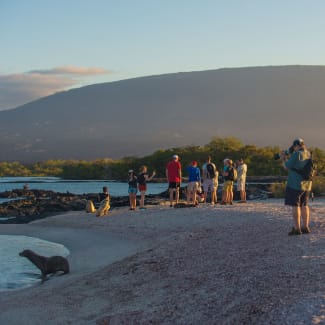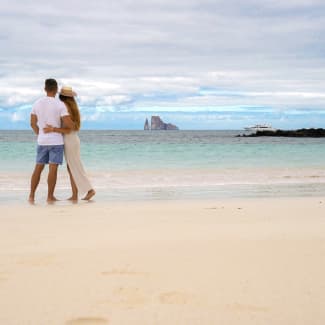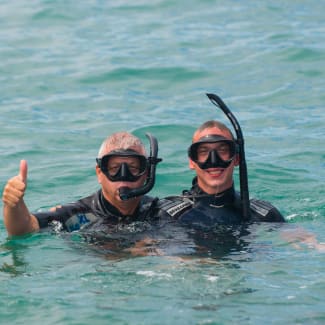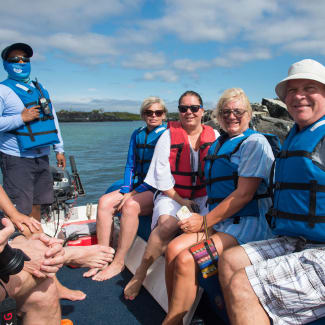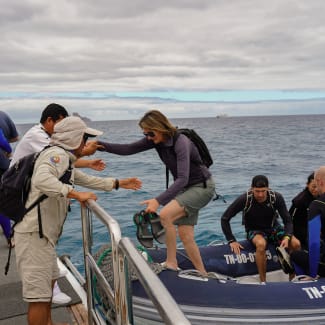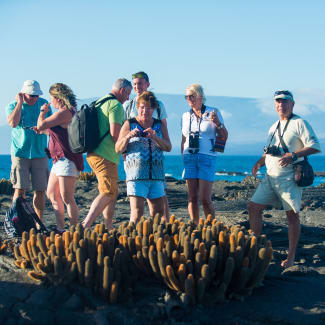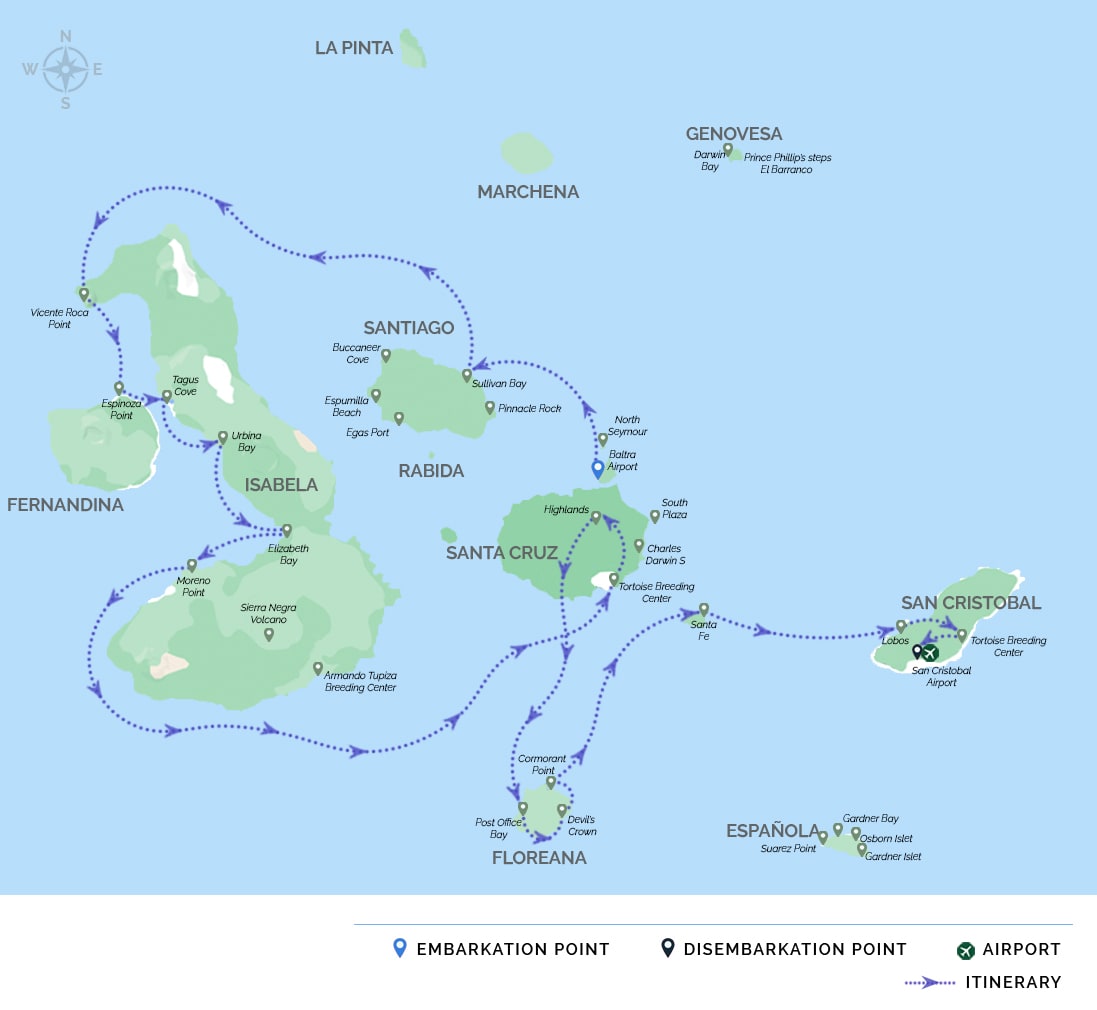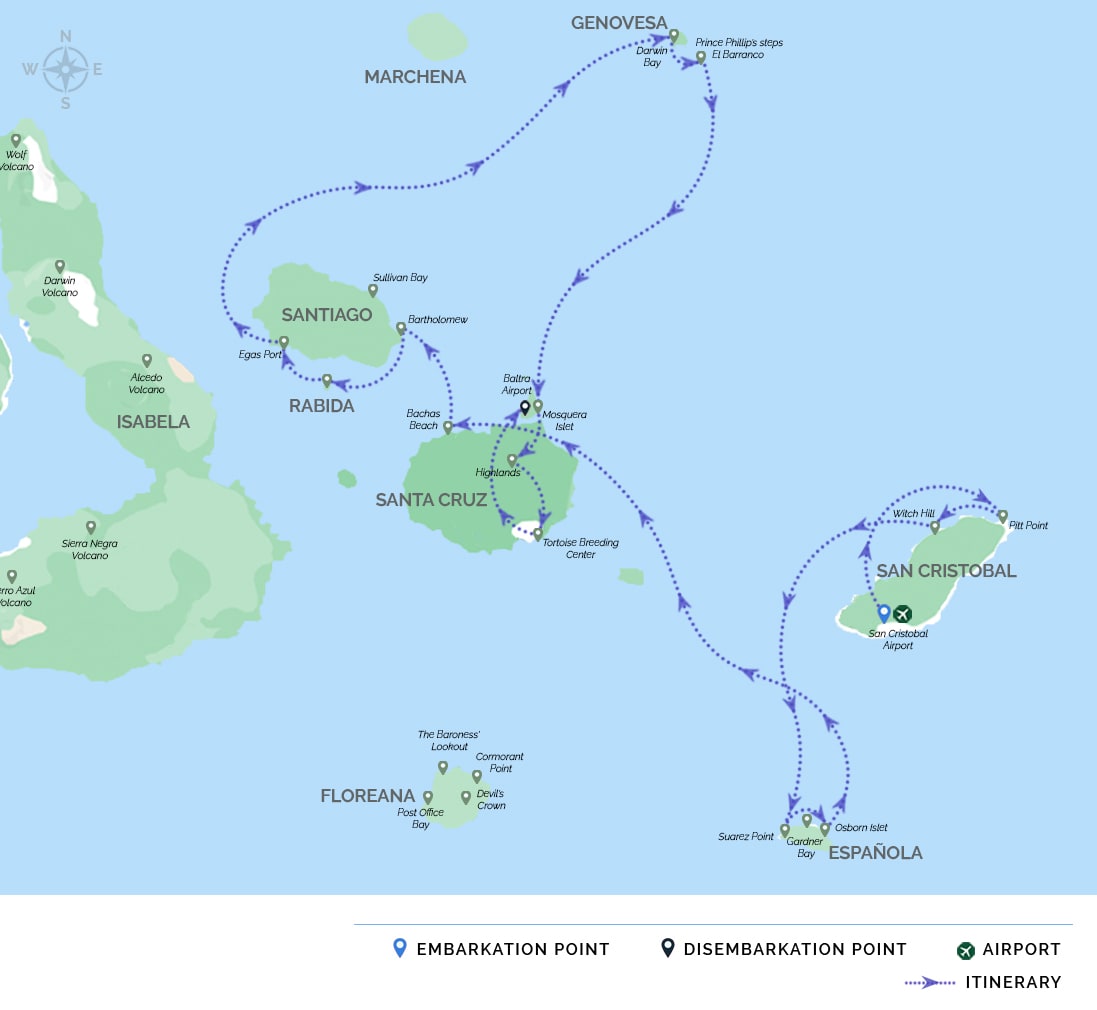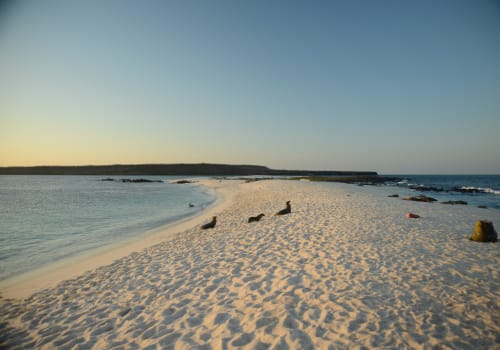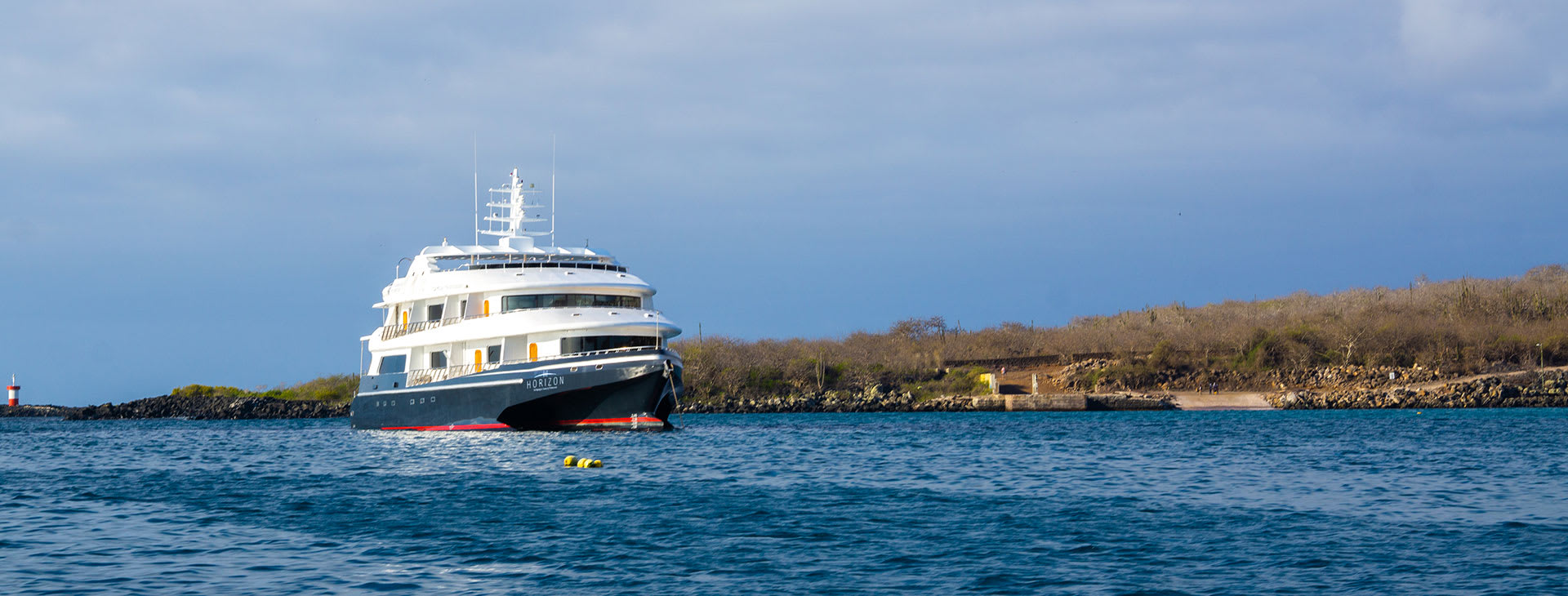
-
Luxury
-
Family
Overview
Launched in 2022, Galapagos Horizon is a luxury trimaran yacht – the only trimaran in the Galapagos Islands in fact – hosting up to 16 passengers on smooth-sailing cruises through the Enchanted Isles. Voyages of four days or more aboard this 125-foot yacht are unique opportunities for up-close encounters with the Galapagos’ most famous species.
Life On Board
Galapagos Horizon has all the hallmarks of a luxury cruise ship, including top-notch service, delicious meals, and modern amenities. However, this boutique trimaran is primarily a place to relax and revel in the joy of exploring the Galapagos. The ship is outfitted with comfortable furnishings that invite you to sink in and stay awhile.
Every room features décor in bold shades that look at home against the Galapagos archipelago’s blue waters. Eight amply-sized staterooms, adorned with dramatic murals of underwater scenes, provide peaceful spots for a midday nap and a good night’s sleep. There are lounge chairs for sunbathing on the sun deck and a Jacuzzi for long soaks after action-packed days.
An indoor lounge provides a respite from the sun. In the dining room, settle in for a long chat with your fellow travelers over local and international cuisine prepared by the ship’s chef. Vegan options are always available on board, with kosher meals available upon request. Eleven crew members are on hand to assist in everything you need during your cruise.
Exciting Excursions
The Galapagos Horizon trimaran offers four distinct itineraries to suit a range of travelers. The four- and five-day are ideal for sampling some of the highlights of the Galapagos Islands. On a short-and-sweet four-day cruise, you will hit Lobos Island to see the colonies of sea lions that play on the rocky shores. Later, hike on Española Island to watch as a blowhole shoots ocean water into the air.
On the five-day route, a stop at Bartolome Island provides a chance to hike to a lookout point over Sullivan Bay. Then, visit Rabida Island to snorkel with tropical fish near the red gravel beach and see pink flamingoes at the black lagoon. Two different eight-day cruises are deep dives into the ecosystem of the Galapagos Islands for wildlife lovers.
One version features stops on Fernandina and Isabela Islands to see mola-mola sunfish, visit the nesting colony of Flightless Cormorants, hike in a mangrove forest, and look for penguins. The other version of the eight-day route includes stops on Española and Genovesa Islands. During these stops, you will watch sea lions and mockingbirds play and hike to tide pools while watching for red- and blue-footed boobies. No matter which cruise you opt for, every excursion is led by a Galapagos National Park Naturalist Guide.
Trimaran Design For Increased Comfort
The Galapagos Horizon is a motorized trimaran with three hulls, including a large middle hull and a smaller one to each side. This design, unique in the Galapagos, ensures she is a sleek, fast ship that can navigate quickly between islands. However, even at her top speeds of 11 knots, three hulls ensure that the vessel has extra stability. With less ocean motion and no hull vibration, you will enjoy a smooth sail and restful nights.
A cruise aboard the Galapagos Horizon is a must for every wildlife lover and bird watcher. From iguanas and giant tortoises to stingrays and yellow warblers, the Galapagos Islands are home to some of the most fascinating wildlife on the planet, and this tremendous trimaran is a comfortable and convenient way to see them all.
Itineraries & Prices
Embarkation
AM: After passing through immigration and baggage claim, you will be met by a Horizon staff member and transferred to the yacht. You will be shown to your cabin where you will have some time to settle in before lunch and a welcome briefing.
PM: This site is part of an environmental project. The tour of this center will explore the natural history of the islands including human interaction and conservation efforts. The Museum of Natural History explains the volcanic origin of the archipelago, ocean currents, climate, and the arrival of endemic species. The Human History exhibit chronologically describes significant events such as discovery and colonization of the islands.

Pitt Point, Witch Hill & Kicker Rock
AM: Located on the northern coast, this eroded hill and its surroundings present one of the most picturesque beaches in the Galapagos with its white powdery sand and the abundance of animals. Wildlife includes sea turtles, rays, and various types of booby birds. The clear water provides an excellent opportunity for enjoying swimming and snorkeling.
PM: This striking rock formation is located a couple hours off the western shore of San Cristobal. Jutting out of the water, the rocks stand vertically at hundreds of feet above the ocean divided by a small channel. Although there are no landing areas, circumnavigation and dinghy rides allow visitors to spot a variety of marine life.
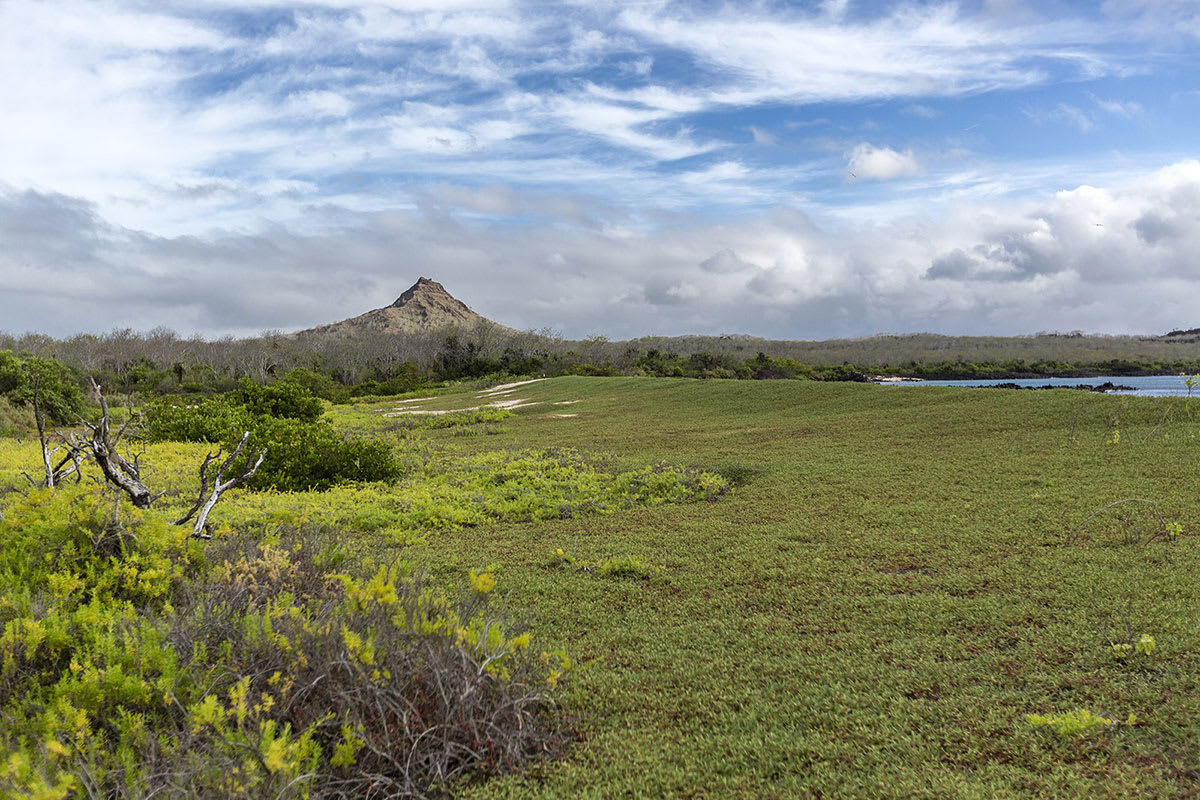
Suarez Point, Gardner Bay, Gardner Islet & Osborn Islet
AM: On the trail to Suarez Point you will have the chance to spot blue-footed boobies, albatrosses, and Nazca boobies. This island is the breeding site of nearly all of the world’s 12,000 pairs of waved albatrosses. You will also visit a beautiful site on the ocean front where there is a cliff that the large albatrosses use as a launching pad! You will have the chance to see the famous blowhole that spurts sea water into the air. The landscape is great for photography.
PM: This excursion takes you to the spectacular Gardner Bay. After landing, you can walk across a lovely white-sand beach amongst a busy sea lion colony or dive into the water to swim with sea lion pups. You may also see curious mockingbirds on the beach.
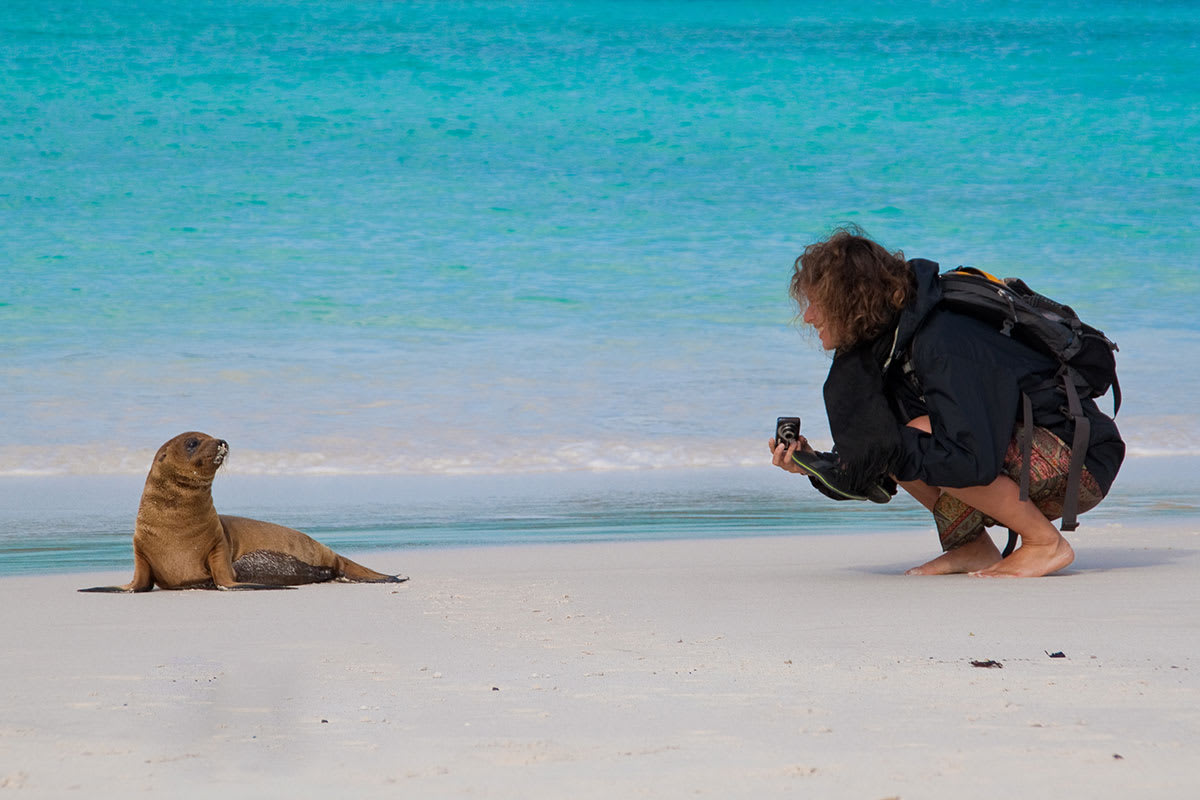
Disembarkation
AM: Bachas Beach is located on the north shore of Santa Cruz and is a beach for swimming. One of the few remnants of the U.S. World War II presence in the Galapagos, a floating pier, can be seen here. You may see flamingos, Sally Lightfoot crabs, hermit crabs, black-necked stilts, and whimbrels. Sea turtles also nest on the beach.
After this final visit, you will be transferred to the Baltra airport in time for your flight back to the mainland.
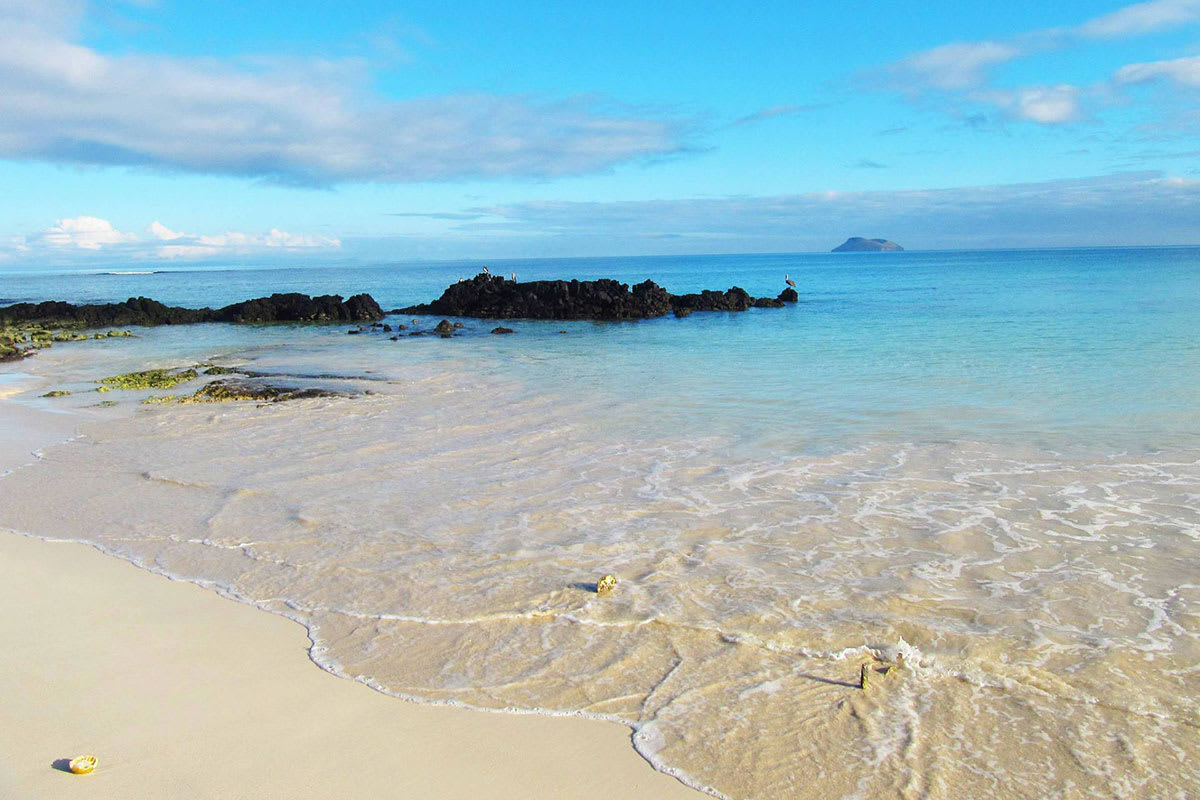
Embarkation
AM: You will arrive at Baltra Island in the morning. After passing through immigration and baggage claim, you will be met by a Horizon staff member and transferred to the yacht. You will be shown to your cabin where you will have some time to settle in before lunch and a welcome briefing.
PM: You will head to Bartholomew Island where the famous Pinnacle Rock is found. Bartholomew consists of an extinct volcano with a variety of red, orange, black and even green volcanic formations. We will take a trail of stairs to the summit of the volcano (about 30 or 40 minutes) where you will enjoy one of the best views of the islands! You will also visit a small, beautiful beach surrounded by the only vegetation found on this barren island. The beach is perfect for snorkeling where you may even see and swim with Galapagos penguins.
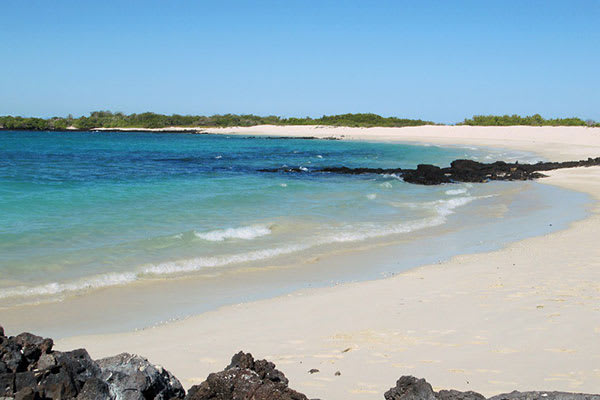
Rabida Island & Egas Port
AM: You will visit Rabida Island (or Jervis) which is one of the most colorful and volcanically varied islands in the archipelago as well as a great snorkeling site. We will start on Rabida’s famous maroon/red sand beach, and after an easy hike, you will arrive to a stunning lookout to enjoy the amazing landscapes. The island is a birdwatcher’s delight. Some species are abundant such as a few varieties of finches, Galapagos vermilion flycatchers, Galapagos hawks and brown pelicans.
PM: Egas Port, also known as James Bay, on Santiago Island is home to the curious Galapagos hawks and quick-footed Galapagos lava lizards. The trail leads to the coastline with gorgeous tide pools and grottos full of fauna. Here the Galapagos fur seals bathe in the sun. This is also a great snorkeling site.

Darwin Bay & El Barranco
AM: Visit the white-sand coral beach of Darwin Bay which includes a half mile trail (0,75km) that winds through mangroves filled with land birds. Nazca boobies, red-footed boobies, and swallow-tailed gulls, which can easily be spotted here. Further down the path we’ll find tidal pools where sea lions swim playfully. At the end is a spectacular view of a cliff.
PM: El Barranco, also known as Prince Phillip’s Steps, is a steep, rocky path that leads up a high cliff rock face. A marvelous view can be appreciated from here. This site is also home to Palo Santo vegetation as well as red-footed boobies, short-eared owls, Galapagos storm petrels, and Galapagos doves.
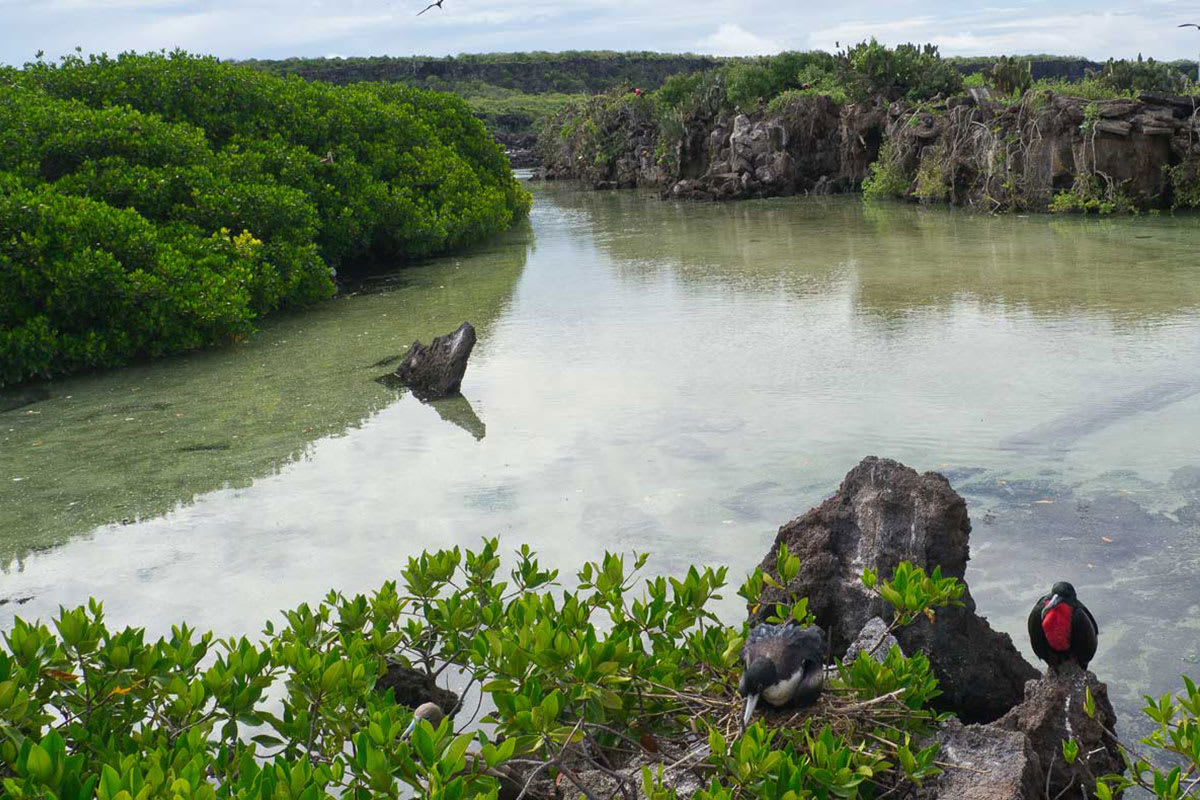
Mosquera Islet & Highlands
AM: Mosquera Islet is located between the islands of Baltra and North Seymour. This reef of rocks and coral (the result of an uprising) is only 160 meters across at its narrowest width. This island has one of the largest populations of sea lions and is home to many shorebirds. There have been occasional reports at this site of orcas feeding on sea lions.
PM: Accessible by bus from Puerto Ayora, the highlands of Santa Cruz are a deep green which contrast beautifully with the dry, lower part of the islands. The predominant vegetation in the highlands are Scalesia trees which create a lush green forest. The lava tunnels, over half a mile long, are underground and walking through them is a unique, surreal experience. At this place you’ll have lunch.
You will visit “Fausto Llerena” Tortoise Breeding Center in Puerto Ayora, where giant tortoises are bred in captivity. This is home to tortoises ranging from 3-inches (new hatchlings) to 4-feet long adults. Subspecies of the giant tortoises interact with one another, and many of the older tortoises are accustomed to humans stretching out their heads for a photo opportunity. The babies are kept until they are about four years-old and strong enough to survive on their own.
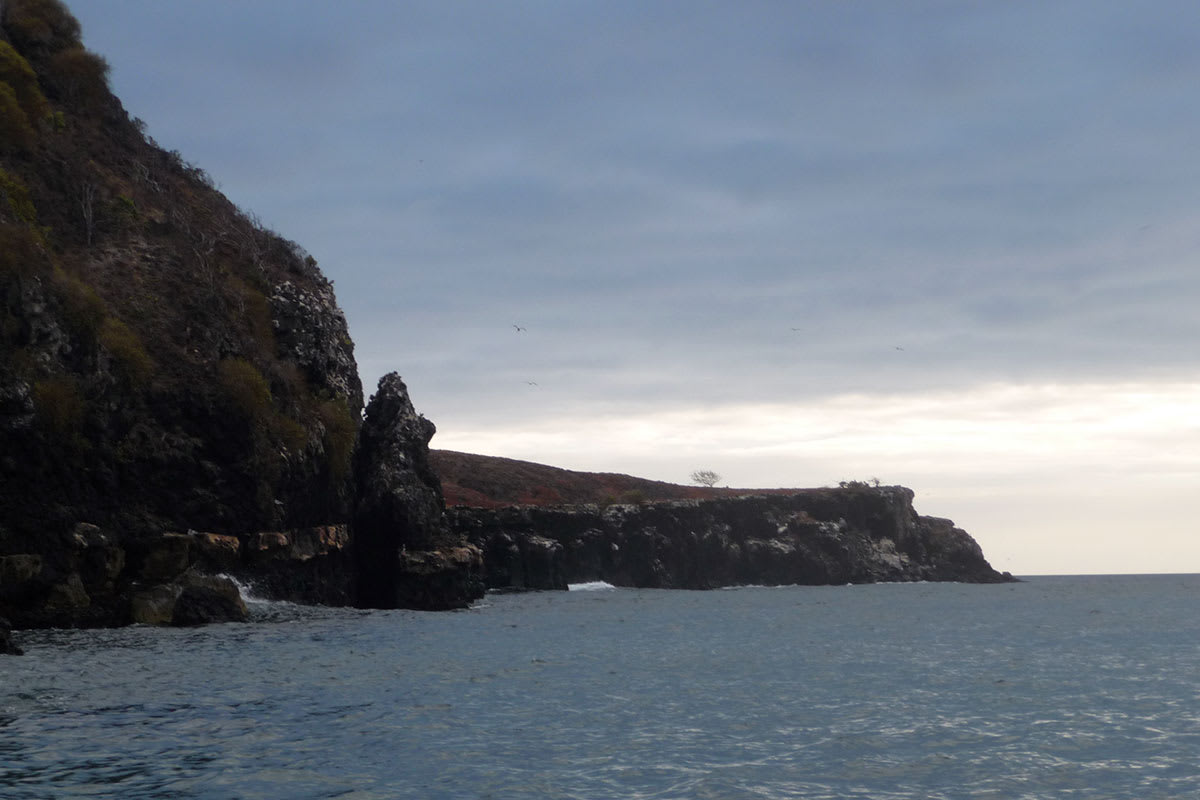
Disembarkation
AM: In North Seymour you may see Galapagos sea lions, blue-footed boobies, and magnificent frigate birds which are abundant on this island. North Seymour was formed by a series of submarine lava flows containing layers of sediment that were uplifted by tectonic activity. The island is characterized by its arid vegetation zone.
After this final visit, you will be transferred to the Baltra airport in time for your flight back to the mainland.
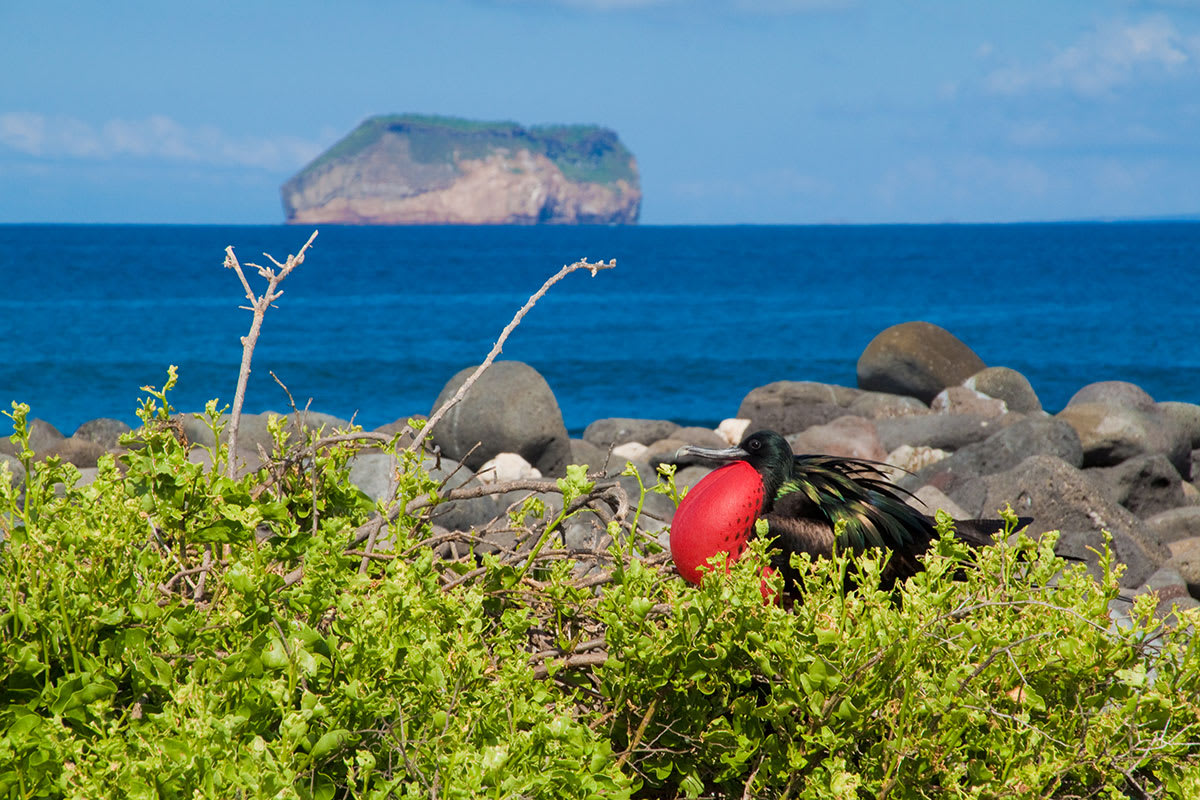
Embarkation
AM: After passing through immigration and baggage claim, you will be met by a Horizon staff member and transferred to the yacht. You will be shown to your cabin where you will have some time to settle in before lunch and a welcome briefing.
PM: You will visit Sullivan Bay located on the southeast part of Santiago. This place is interesting for its geology because the area is covered by lava flows. This place has elevations in the form of small volcanoes formed by the lava flows.
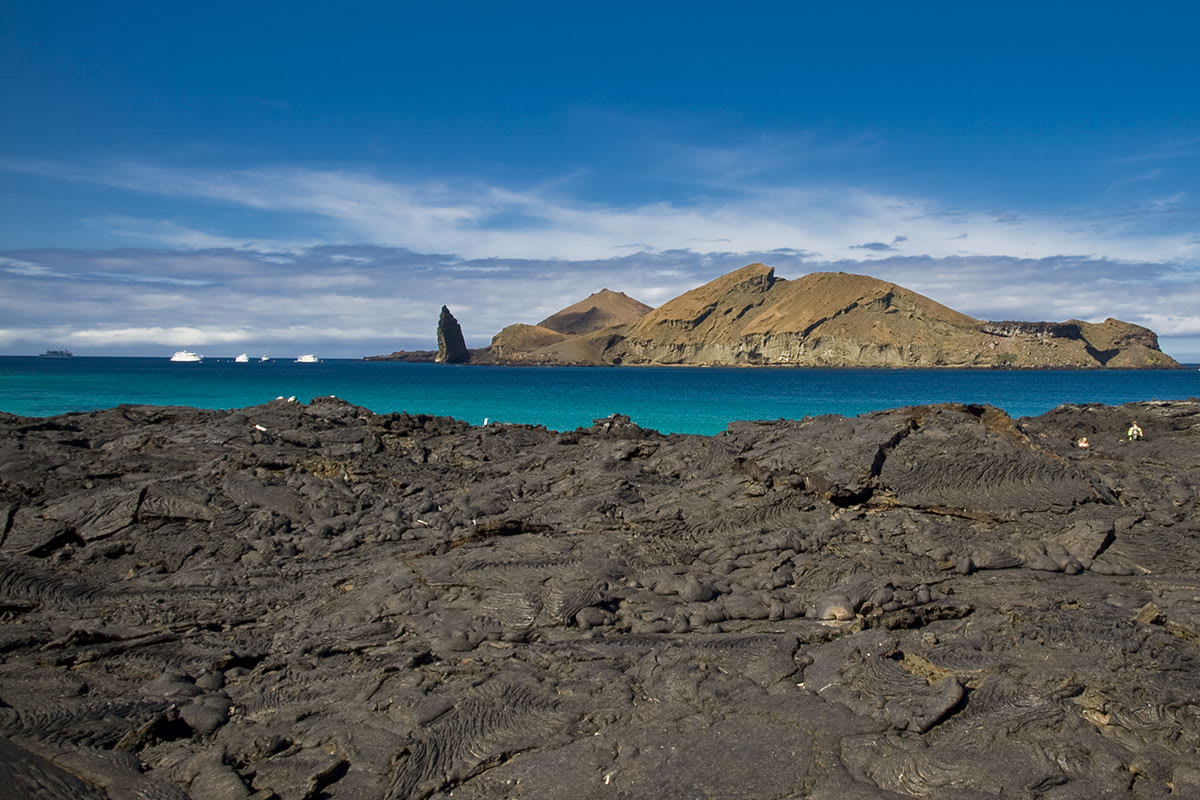
Vicente Roca & Espinosa Point
AM: Comprised of two separate coves, Vicente Roca Point is a large bay with spectacular sea life. Keep an eye out for seahorses, sea turtles, and the strange yet fascinating Mola mola (or sunfish) while you snorkel.
PM: Crossing the Bolivar Channel that divides Isabela and Fernandina Islands, you will land at Espinoza Point, and after walking past a colony of marine iguanas and a group of sea lions, you will reach the island’s highlight: the flightless cormorant nesting site. This area also provides a great opportunity to see the Galapagos hawk.
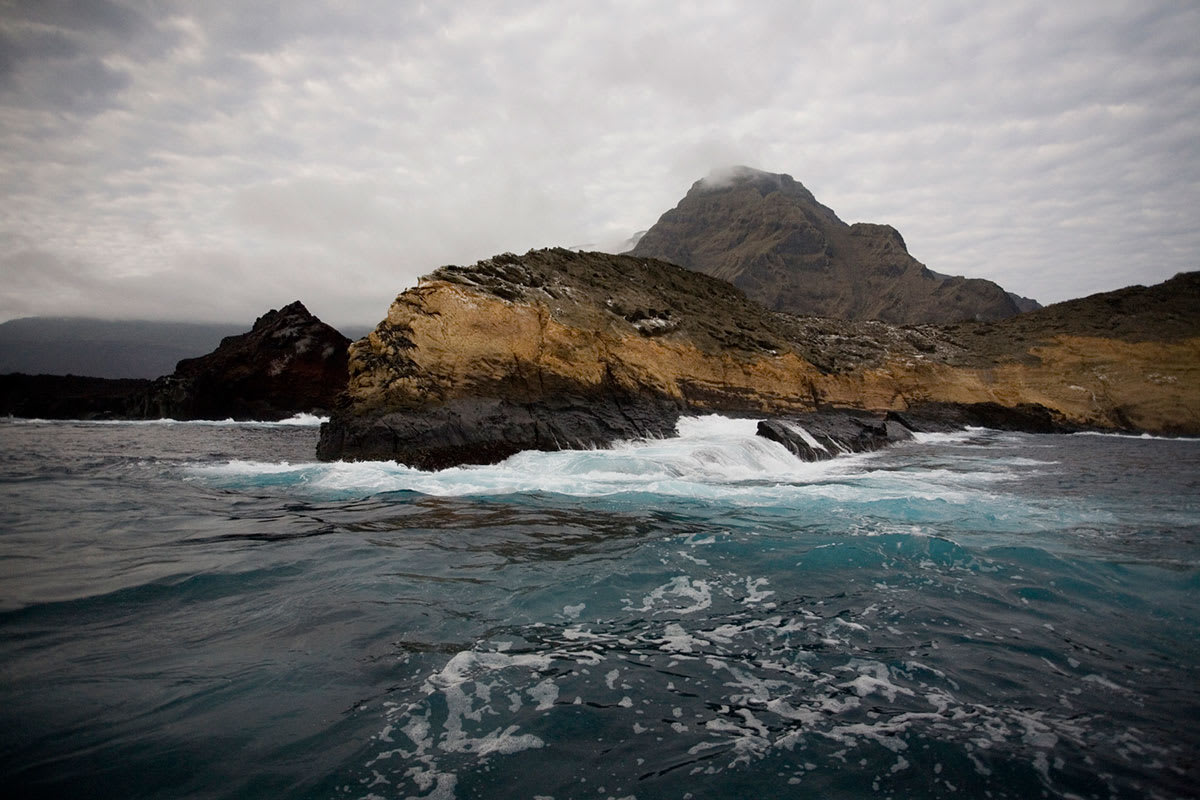
Tagus Cove & Urbina Bay
AM: You will visit Tagus Cove on Isabela Island which is located across from Fernandina Island, near the Bolivar Channel dividing the two islands. This spot has been frequented by ships since the 1800s, using the area as an anchorage site. Trails winding by Lake Darwin up to a ridge display wonderful views.
PM: Urbina Bay is located at the base of Alcedo Volcano on the west coast between Tagus Cove and Elizabeth Bay. This area experienced a major uplift in 1954 causing the land to rise over 16 feet. The coast expanded half a mile out leaving marine life stranded on the new shore. This area is also a great place for snorkeling.

Elizabeth Bay & Moreno Point
AM: Elizabeth Bay is located on the east coast of Isabela Island. The bay contains many islets, which can be visited by dinghy. Penguins and blue-footed boobies can be spotted on the rocky islets. With an abundance of marine life and clear water, the area is perfect for snorkeling and viewing schools of colorful fish, sea lions, and perhaps even sharks.
PM: Moreno Point is located southwest of Elizabeth Bay. Here a dry landing onto what was once flowing lava is possible. The lava has left craters in its wake which formed crystal tide pools. By looking into the pools, you can peer into another world as the marine life drifts by your window. In the brackish pools of this area, you may see pink flamingos, white-cheeked pintails, and common gallinules. If you look carefully into the pools, you may see white-tip reef sharks and some sea turtles.
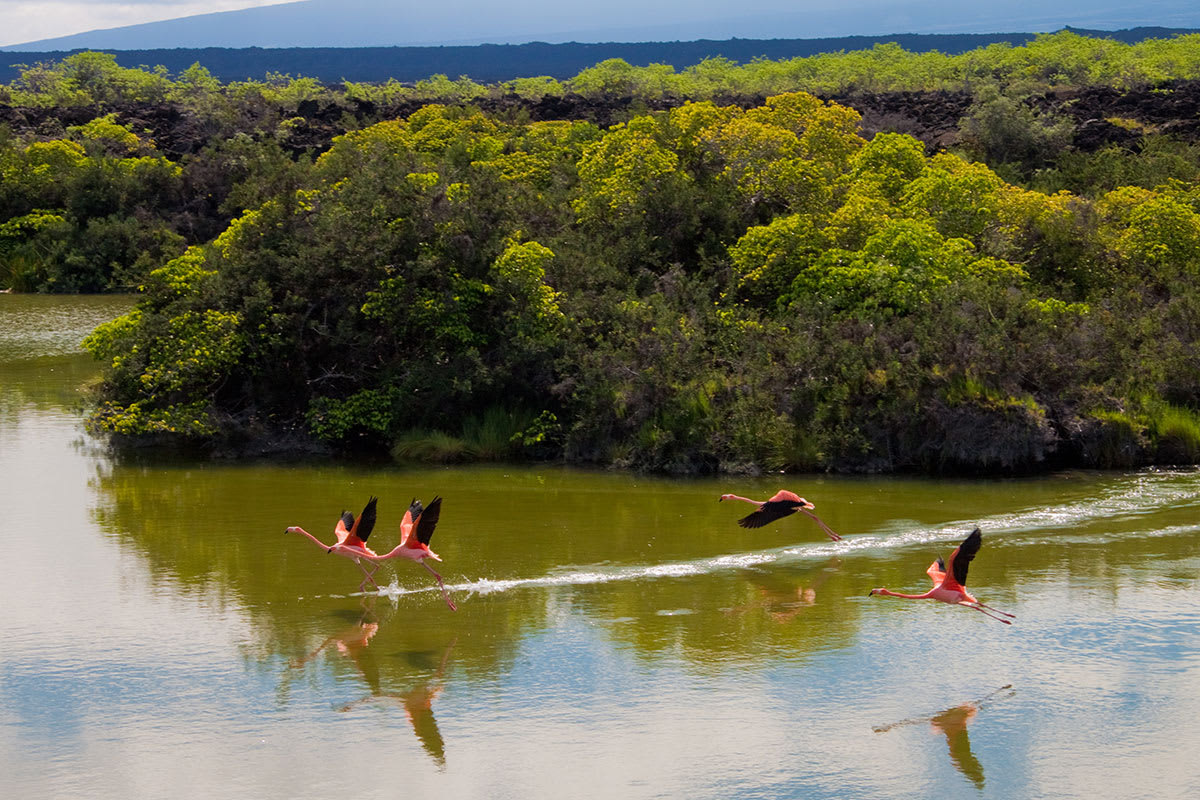
Fausto Llerena Breeding Center & Highlands
AM: You will visit “Fausto Llerena” Tortoise Breeding Center in Puerto Ayora, where giant tortoises are bred in captivity. This is home to tortoises ranging from 3-inches (new hatchlings) to 4-feet long adults. Subspecies of the giant tortoises interact with one another, and many of the older tortoises are accustomed to humans stretching out their heads for a photo opportunity. The babies are kept until they are about four years-old and strong enough to survive on their own.
PM: Accessible by bus from Puerto Ayora, the highlands of Santa Cruz are a deep green which contrast beautifully with the dry, lower part of the islands. The predominant vegetation in the highlands are Scalesia trees which create a lush green forest. The lava tunnels, over half a mile long, are underground and walking through them is a unique, surreal experience. At this place you’ll have lunch.
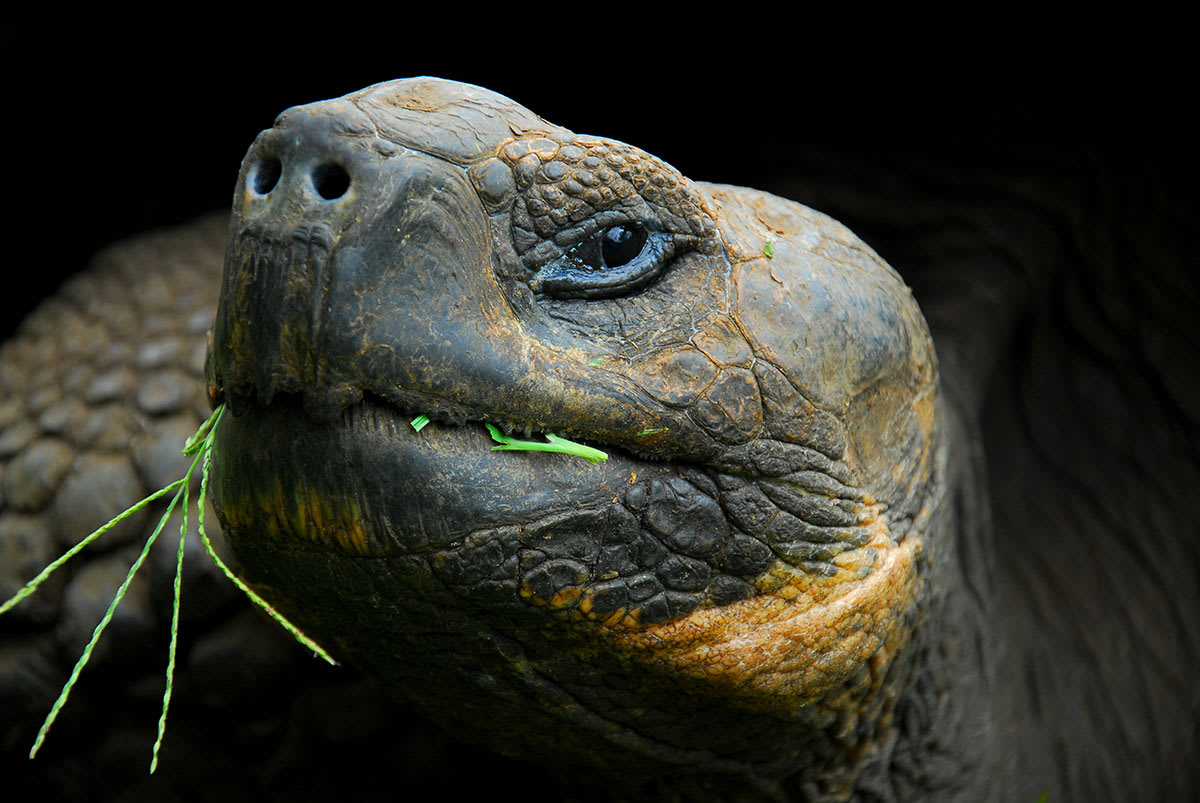
Post Office Bay, Delvil's Crown & Cormorant Point
AM: You will land on a beach and head to a spot where 18th-century whalers placed a wooden barrel used as an unofficial mail box. The custom continues to this day with Galapagos visitors. So, don’t forget your postcards, and don’t be surprised if the post card arrives to its destination before you even get home!
You will have a chance to snorkel around Devil’s Crown which is the rocky remains of an offshore volcano sticking out of the water. This is a great location to spot a wide range of marine creatures.
PM: Cormorant Point hosts a large flamingo lagoon where other birds such as common stilts and whitecheeked pintails can also be seen. The beaches on this island are distinct: The Green Beach is named so due to its green color, which comes from a high percentage of olivine crystals in the sand, and the Flour Sand Beach is composed of white coral.
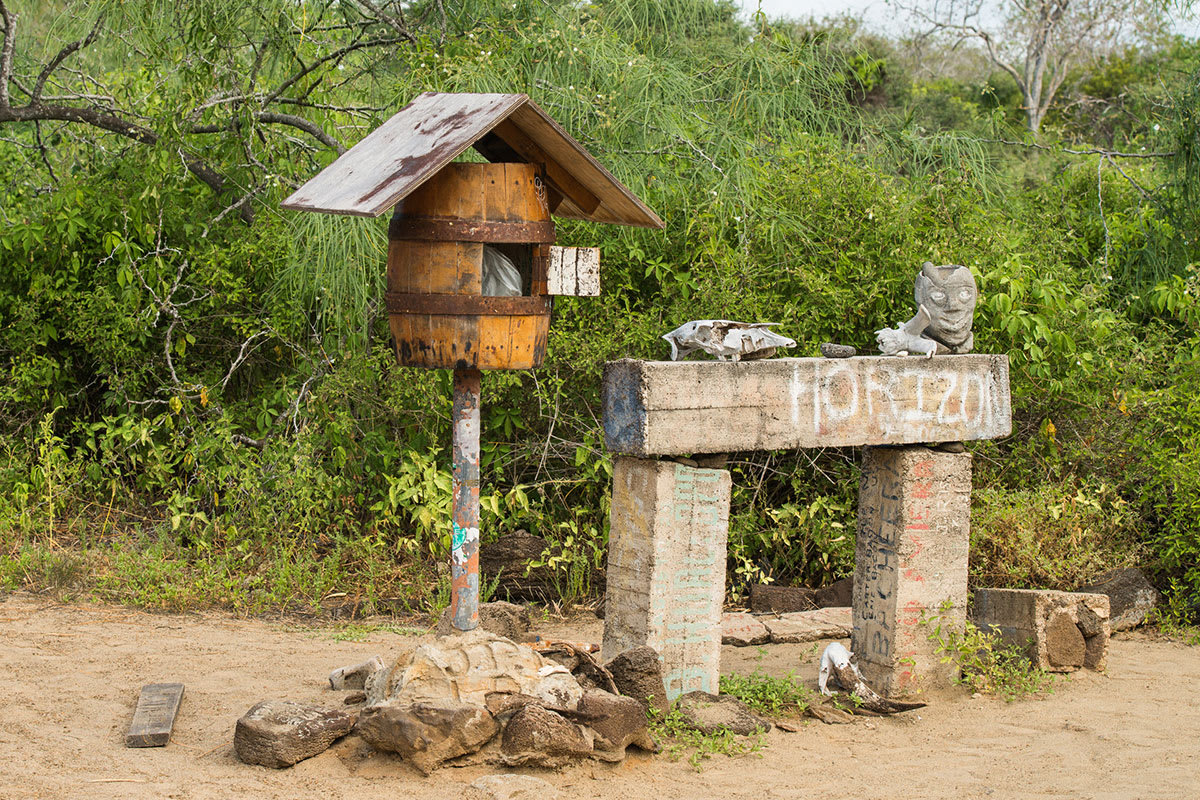
Santa Fe & Lobos Island
AM: Santa Fe Island (Barrington) is home to the small picturesque bay and anchorage on the island’s northeast coast. The bay has two visitor trails: one leading to a scenic viewpoint atop a cliff, and the other spanning from a small beach to a tall prickly pear cactus forest.
PM: You will take an excursion to Lobos Island which means “Sea Lion Island.” This appropriately named island is ripe with noisy, playful, jolly sea lions who will welcome you to their home with open, well, fins. This island also offers great snorkeling opportunities as well as the chance to see blue-footed and Nazca boobies.
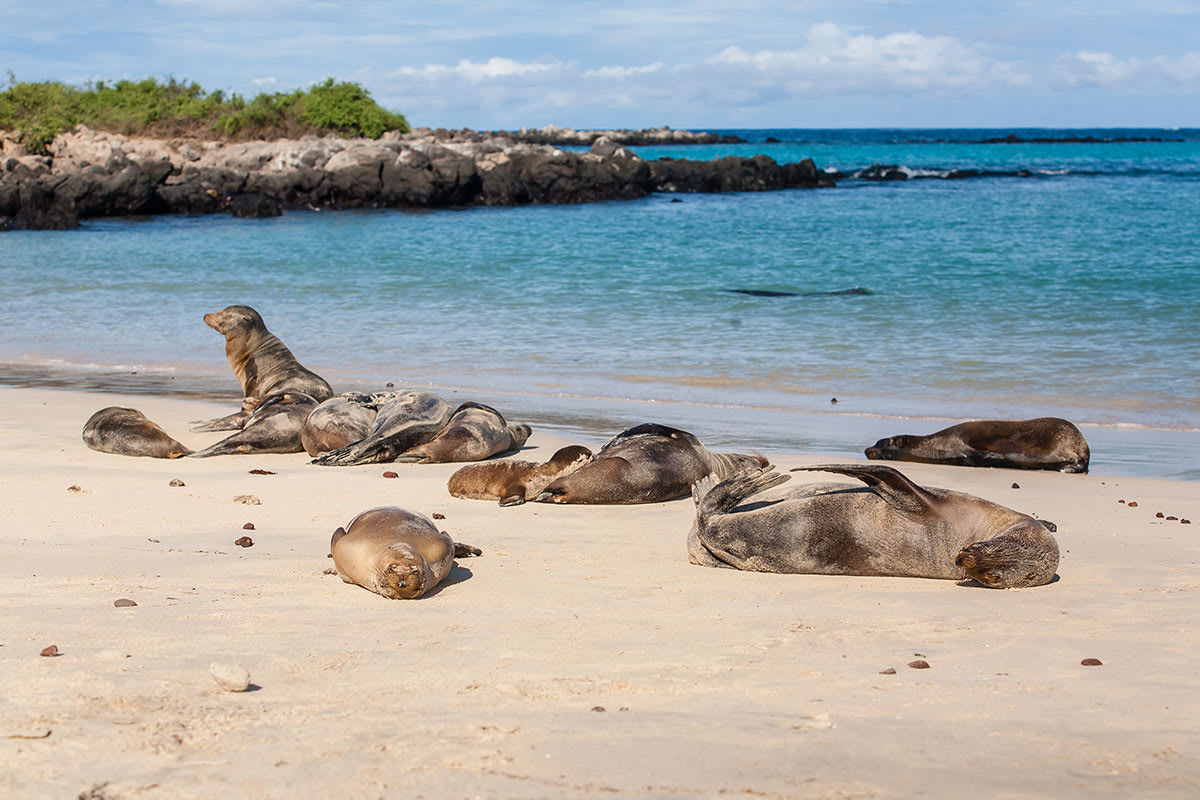
Disembarkation
AM: Visit the Breeding Center David Rodriguez - “La Galapaguera”, in Cerro Colorado, is a new site in the southeast part of San Cristobal Island and can now be reached in roughly one hour by road from Puerto Baquerizo Moreno. On the trees and shrubs surrounding the site, you may see land birds like warblers, finches and mockingbirds. Giant tortoises can be observed on the trails. They live there wild but in a protected area to ensure their survival by sealing them off from introduced predators like pigs and goats.
After this final visit, you will be transferred to the San Cristobal airport in time for your flight back to the mainland.

Embarkation
AM: After passing through immigration and baggage claim, you will be met by a Horizon staff member and transferred to the yacht. You will be shown to your cabin where you will have some time to settle in before lunch and a welcome briefing.
PM: This site is part of an environment project. The tour of this center will explore the natural history of the islands including human interaction and conservation efforts. The Museum of Natural History explains the volcanic origin of the archipelago, ocean currents, climate, and the arrival of endemic species. The Human History exhibit chronologically describes significant events such as discovery and colonization of the islands.
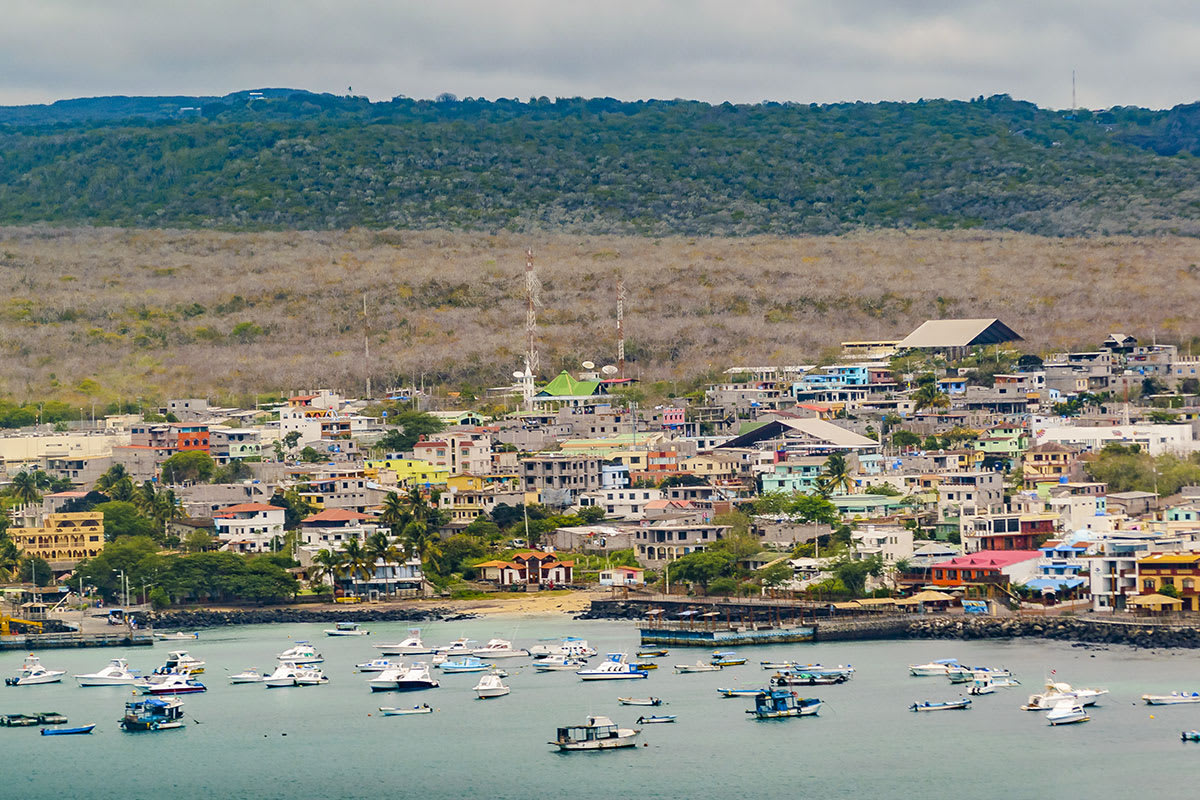
Pitt Point, Witch Hill & Kicker Rock
AM: Pitt Point, situated on the north-eastern tip of the San Cristobal island, hosts frigate birds, storm petrels, and all three types of booby birds: the Nazca, blue-footed and red-footed boobies. A steep trail goes up a cliff and through a ravine leading visitors to an area with an abundance of birds.
PM: Located on the northern coast, this eroded hill and its surroundings present one of the most picturesque beaches in the Galapagos with its white powdery sand and the abundance of animals. Wildlife includes sea turtles, rays, and various types of booby birds. The clear water provides an excellent opportunity for enjoying swimming and snorkeling.
This striking rock formation is located a couple hours off the western shore of San Cristobal. Jutting out of the water, the rocks stand vertically at hundreds of feet above the ocean divided by a small channel. Although there are no landing areas, circumnavigation and dinghy rides allow visitors to spot a variety of marine life.
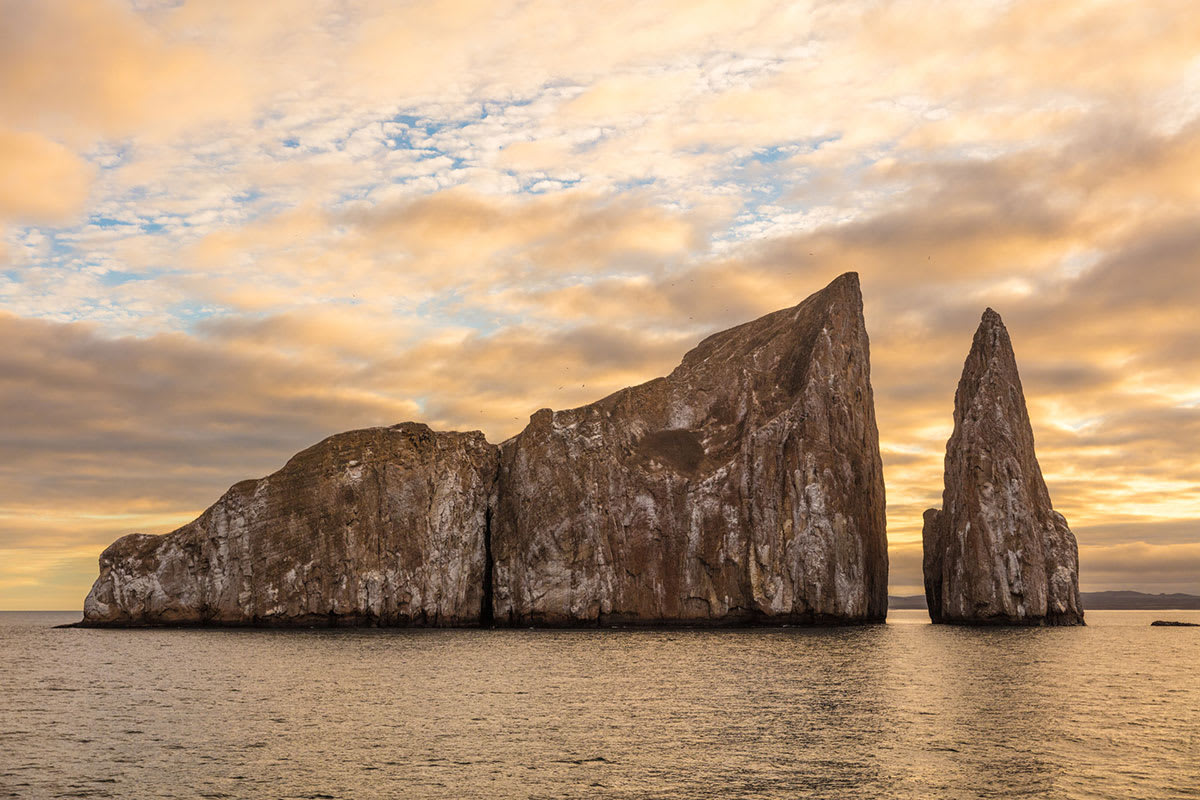
Suarez Point, Gardner Bay, Gardner Islet & Osborn Islet
AM: On the trail to Suarez Point you will have the chance to spot blue-footed boobies, albatrosses, and Nazca boobies. This island is the breeding site of nearly all of the world’s 12,000 pairs of waved albatrosses. You will also visit a beautiful site on the ocean front where there is a cliff that the large albatrosses use as a launching pad! You will have the chance to see the famous blowhole that spurts sea water into the air. The landscape is great for photography.
PM: This excursion takes you to the spectacular Gardner Bay. After landing, you can walk across a lovely white-sand beach amongst a busy sea lion colony or dive into the water to swim with sea lion pups. You may also see curious mockingbirds on the beach.
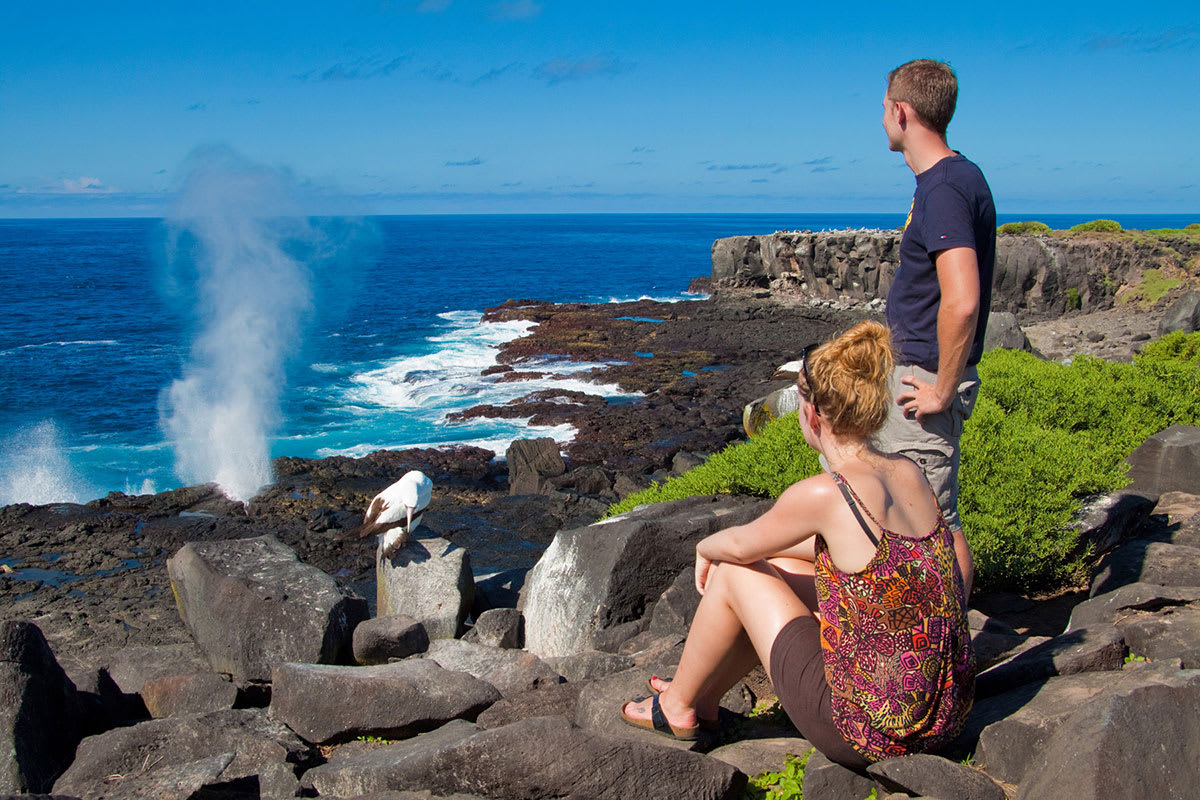
Bachas Beach & Pinnacle Rock
AM: Bachas Beach is located on the north shore of Santa Cruz and is a beach for swimming. One of the few remnants of the U.S. World War II presence in the Galapagos, a floating pier, can be seen here. You may see flamingos, Sally Lightfoot crabs, hermit crabs, black-necked stilts, and whimbrels. Sea turtles also nest on the beach.
PM: You will head to Bartholomew Island where the famous Pinnacle Rock is found. Bartholomew consists of an extinct volcano with a variety of red, orange, black and even green volcanic formations. We will take a trail of stairs to the summit of the volcano (about 30 or 40 minutes) where you will enjoy one of the best views of the islands! You will also visit a small, beautiful beach surrounded by the only vegetation found on this barren island. The beach is perfect for snorkeling where you may even see and swim with Galapagos penguins.
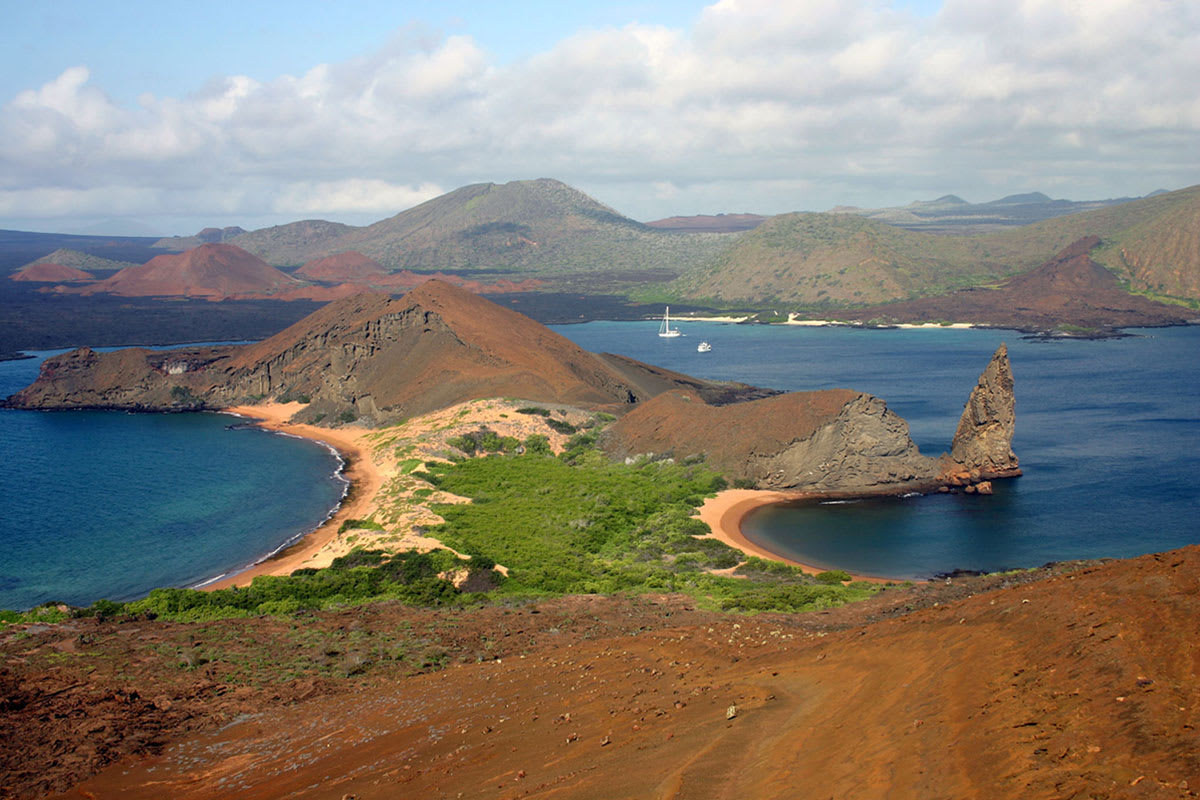
Rabida Island & Egas Port
AM: You will visit Rabida Island (or Jervis) which is one of the most colorful and volcanically varied islands in the archipelago as well as a great snorkeling site. We will start on Rabida’s famous maroon/red sand beach, and after an easy hike, you will arrive to a stunning lookout to enjoy the amazing landscapes. The island is a birdwatcher’s delight. Some species are abundant such as a few varieties of finches, Galapagos vermilion flycatchers, Galapagos hawks and brown pelicans.
PM: Egas Port, also known as James Bay, on Santiago Island is home to the curious Galapagos hawks and quick-footed Galapagos lava lizards. The trail leads to the coastline with gorgeous tide pools and grottos full of fauna. Here the Galapagos fur seals bathe in the sun. This is also a great snorkeling site.
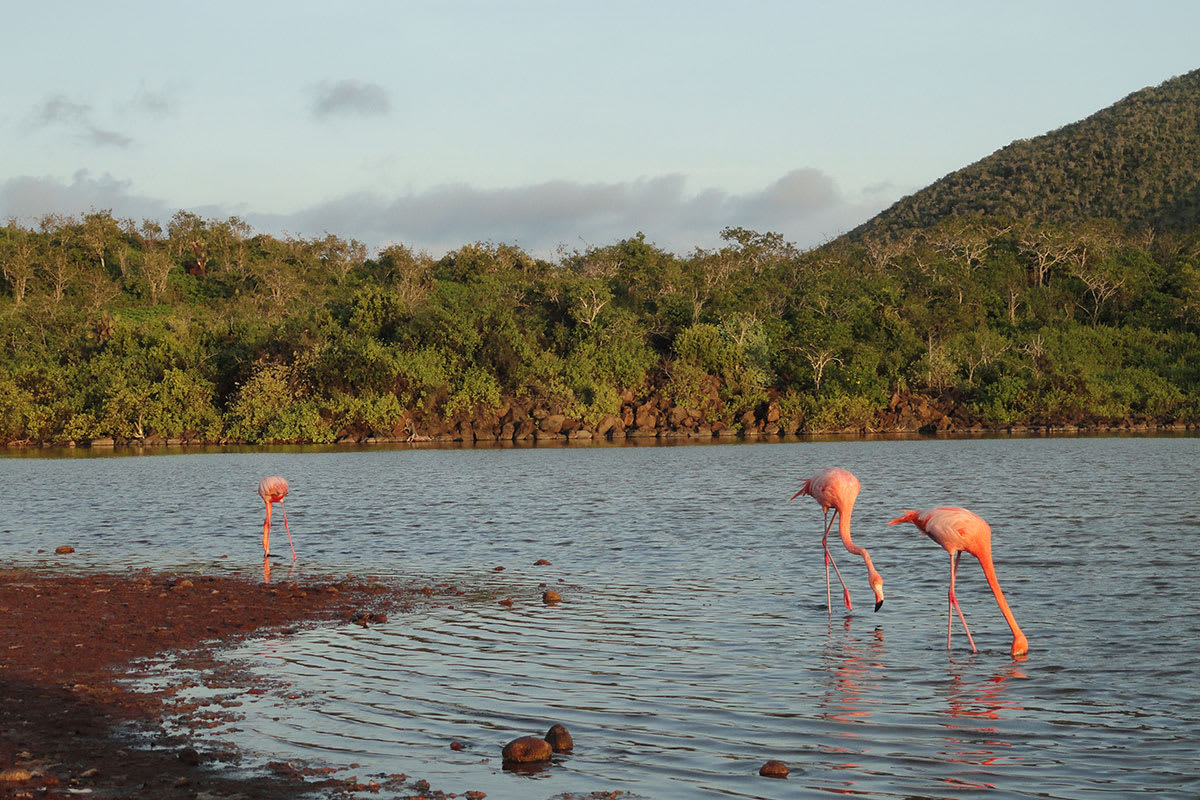
Darwin Bay & El Barranco
AM: Visit the white-sand coral beach of Darwin Bay which includes a half-mile trail (0,75km) that winds through mangroves filled with land birds. Nazca boobies, red-footed boobies, and swallow-tailed gulls, can easily be spotted here. Further down the path we’ll find tidal pools where sea lions swim playfully. At the end is a spectacular view of a cliff.
PM: El Barranco, also known as Prince Phillip’s Steps, is a steep, rocky path that leads up a high cliff rock face. A marvelous view can be appreciated from here. This site is also home to Palo Santo vegetation as well as red-footed boobies, short-eared owls, Galapagos storm petrels, and Galapagos doves.
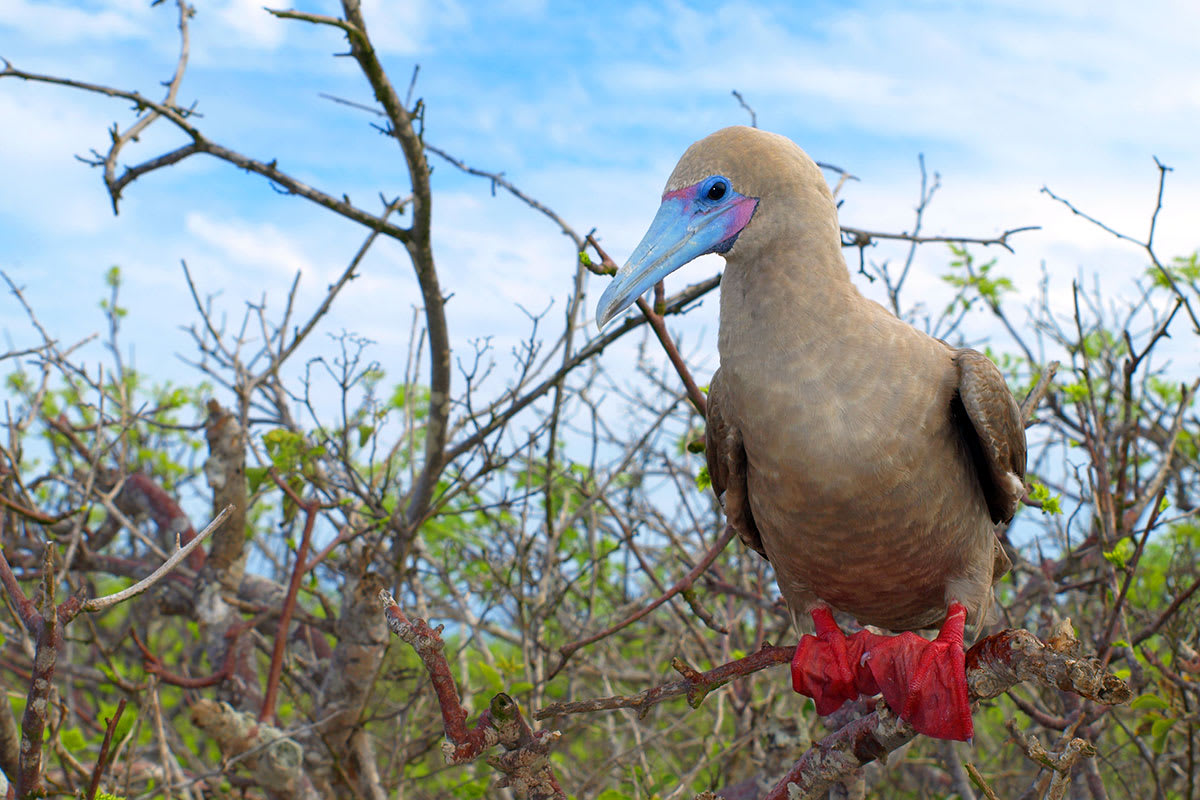
Mosquera Islet & Highlands
AM: Mosquera Islet is located between the islands of Baltra and North Seymour. This reef of rocks and coral (the result of an uprising) is only 160 meters across at its narrowest width. This island has one of the largest populations of sea lions and is home to many shorebirds. There have been occasional reports at this site of orcas feeding on sea lions.
Accessible by bus from Puerto Ayora, the highlands of Santa Cruz are a deep green which contrast beautifully with the dry, lower part of the islands. The predominant vegetation in the highlands are Scalesia trees which create a lush green forest. The lava tunnels, over half a mile long, are underground and walking through them is a unique, surreal experience. At this place you’ll have lunch.
PM: You will visit “Fausto Llerena” Tortoise Breeding Center in Puerto Ayora, where giant tortoises are bred in captivity. This is home to tortoises ranging from 3-inches (new hatchlings) to 4-feet long adults. Subspecies of the giant tortoises interact with one another, and many of the older tortoises are accustomed to humans stretching out their heads for a photo opportunity. The babies are kept until they are about four years-old and strong enough to survive on their own.
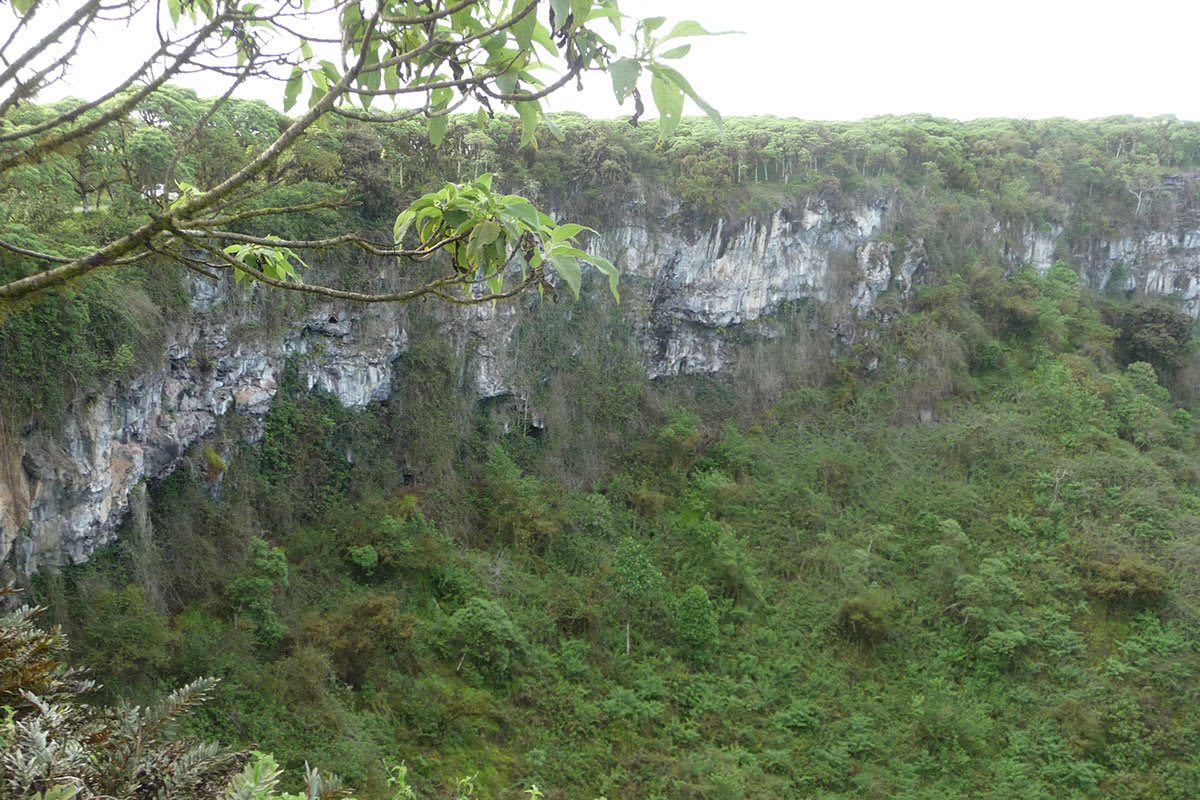
North Seymour
AM: In North Seymour you may see Galapagos sea lions, blue-footed boobies, and magnificent frigate birds which are abundant on this island. North Seymour was formed by a series of submarine lava flows containing layers of sediment that were uplifted by tectonic activity. The island is characterized by its arid vegetation zone.
After this final visit, you will be transferred to the Baltra airport in time for your flight back to the mainland.

Accommodations
Social Areas
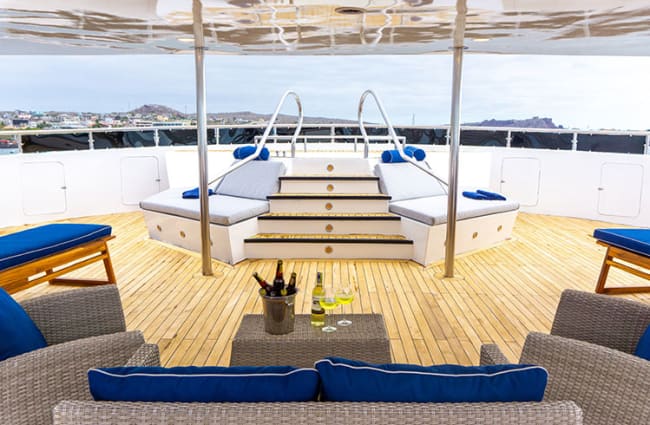
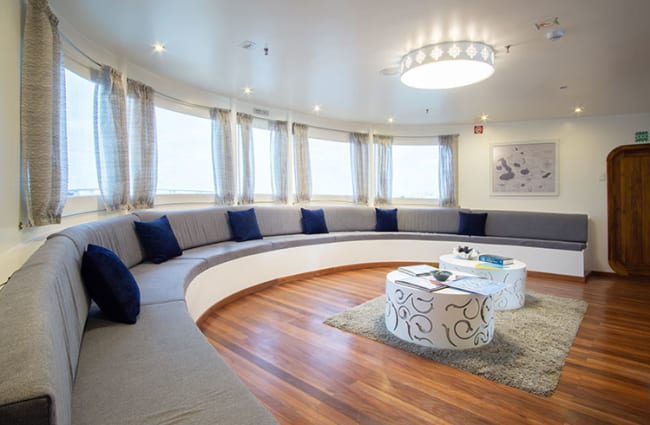
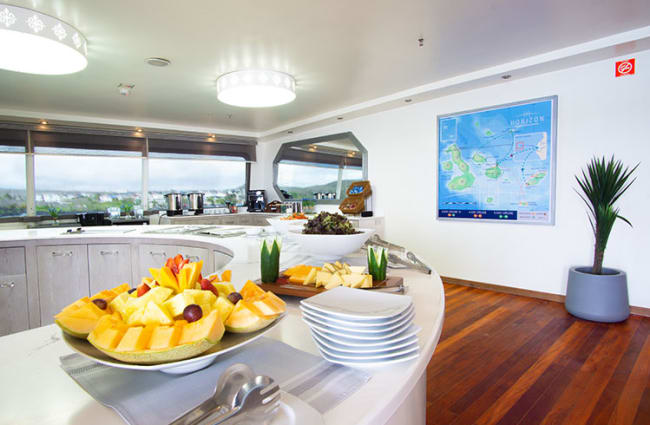
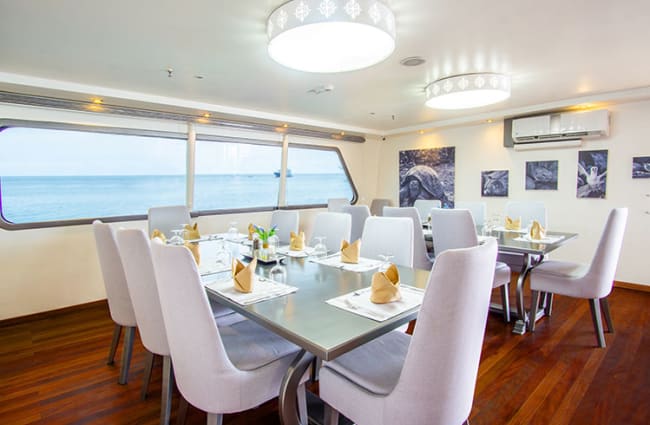
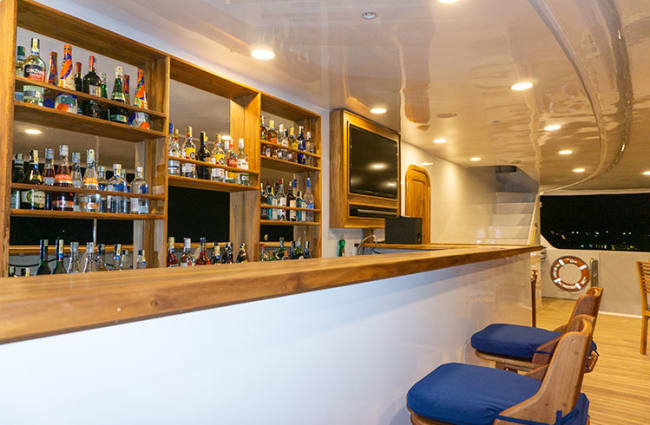
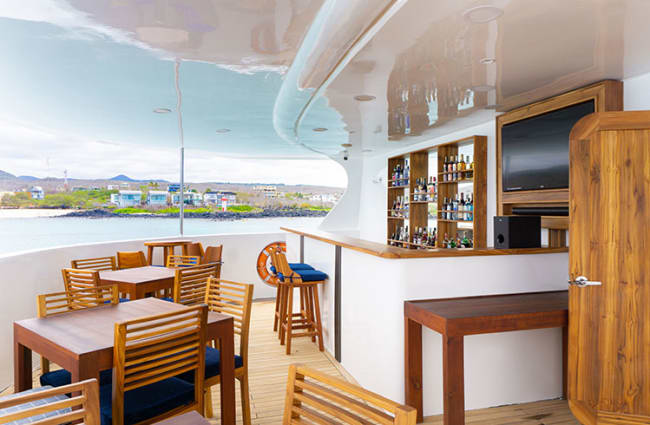
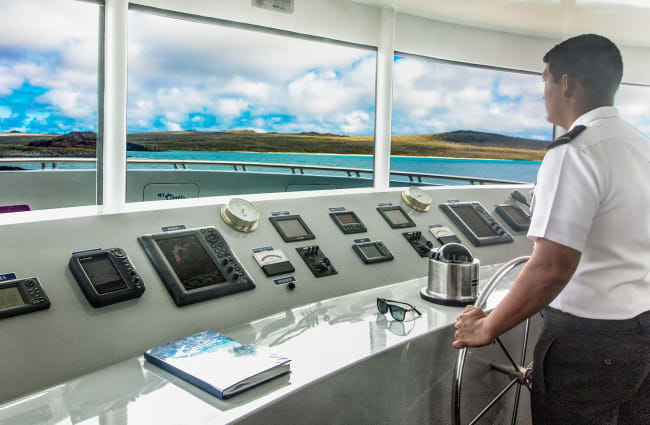
Suites & Cabins
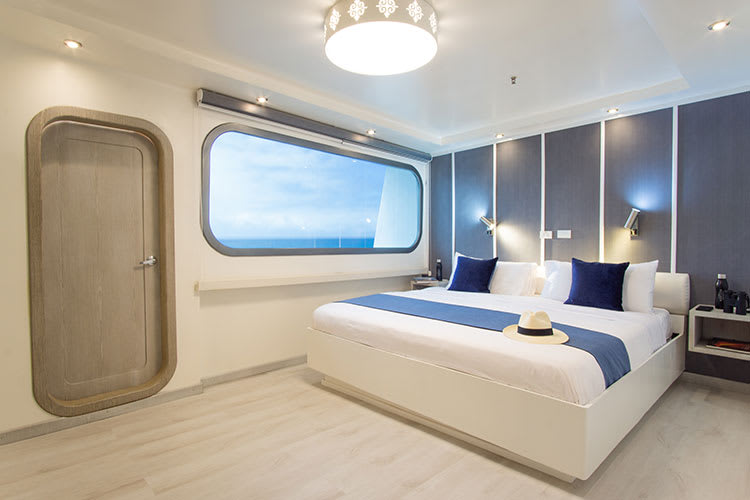


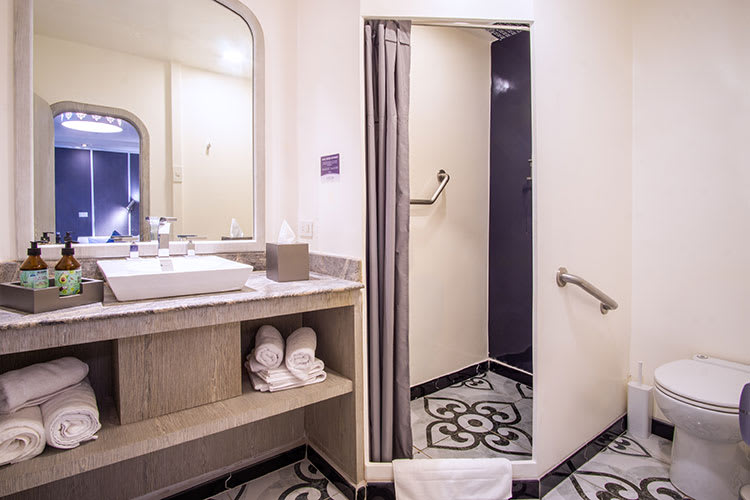
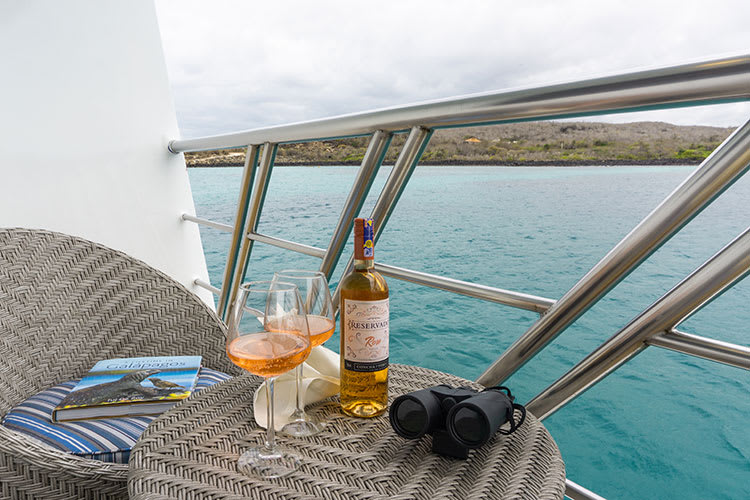
Stateroom
The Staterooms feature an ensuite living room for guests as they take in the scenery from the large panoramic windows. Each room comes with a private balcony beautifully designed for guests to unwind.
Related Cruises

- Galapagos
- Ecuador
Cormorant II
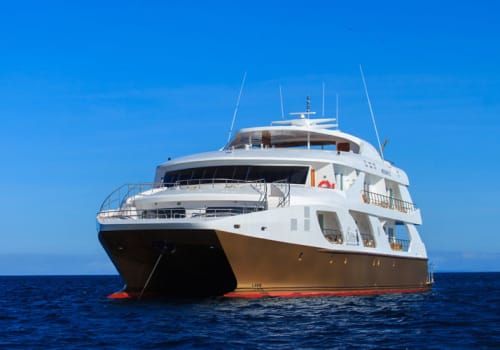
- Galapagos
- Ecuador
Elite

- Galapagos
- Ecuador
Galaxy Sirius
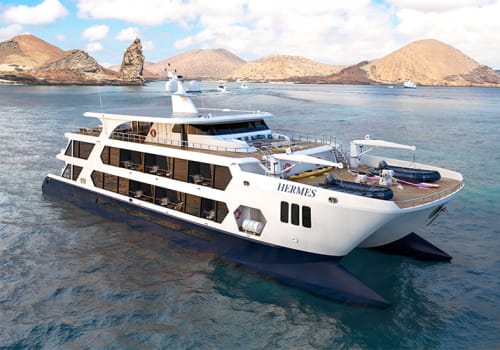
- Galapagos
- Ecuador
Hermes
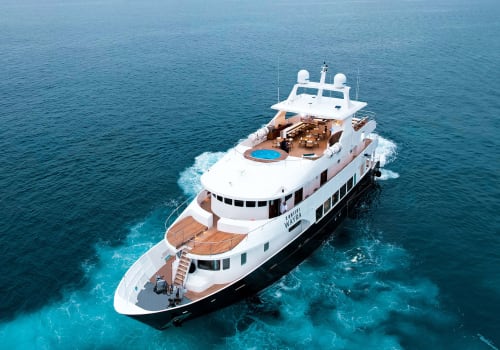
- Ecuador
- Costa Rica
Kontiki Wayra
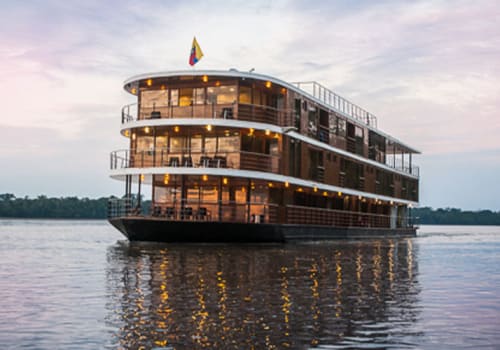
- Amazon
- Ecuador
Anakonda

- Galapagos
- Ecuador
Alya
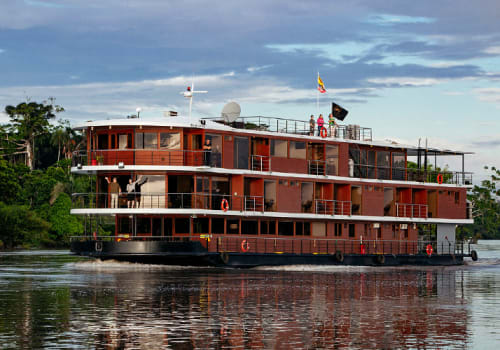
- Amazon
- Ecuador
Manatee Amazon Explorer

- Galapagos
- Ecuador
Endemic

- Galapagos
- Ecuador
Petrel

- Galapagos
- Ecuador
Eco Galaxy

- Galapagos
- Ecuador
Natural Paradise

- Galapagos
- Ecuador

